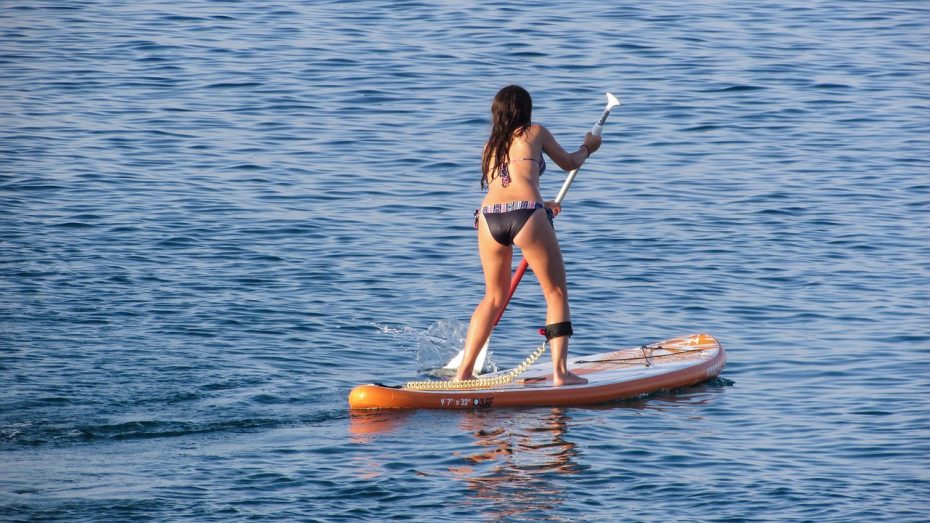Why should you wear your SUP leash?
by Eileen Meehan | Oct 13, 2016
One of the best ways you can have fun on your SUP is to always think of safety first. One important safety aspect to think about when you are on the water on your paddleboard is your leash. In fact, many experienced paddlers will tell you that, apart from your paddle, the leash is one of the most
important SUP accessories you must use.
Your paddleboard can literally be away from you in seconds if you slip, fall or lose your balance. If there is even a slight wind or gentle current, you may find yourself swimming a long distance to your SUP if you didn’t have your leash attached. In some circumstances, being attached to your board by a leash can literally be a matter of life and death.
What Style of Leash is Best?
Depending on where you paddleboard, there are different types of leashes that can help you get the most enjoyment out of paddleboarding.
Straight Leash
These are preferred by surfers and ocean paddlers because there is less chance of them getting tangled.
Coiled Leash
These have the advantage that they don’t drag behind the paddleboard, however, they can sometimes get tangled up in turbulent water.
Breakaway Leash
If you enjoy river paddling, then a breakaway leash is essential so that you can quickly release it if your SUP gets caught up in strong currents and branches.
All leashes are attached by a
Velcro cuff which keeps it securely in place around your ankle or just below you knee, depending on which type of leash you decide is best for you.
In the event of a leash failure and your SUP gets away from you, it’s important to ditch the paddle and swim to the nearest board (either your’s or someone nearby). Trying to swim with your paddle will tire you out very quickly. Once you reach your board, it will be easier to lay on your board and paddle with your hand to retrieve your paddle.
How Long Should the SUP Leash Be?
As a general rule, when surfing your leash should be about a foot longer than the length of your board. So, if your board is 11′ you should buy a leash that is around 12′ long. But if just flatwater paddling you may want a leash shorter than the length of your board, so it doesn’t drag in the water behind you.
Keep Yourself and Others Safe
Being attached to your SUP by a leash is just one way that you can
keep yourself and others safe on the water when paddling. However, you should also take into consideration weather conditions and your level of experience before venturing out on the open water.
For example, if there is a breeze when you start paddling, it is best to start off paddling against the breeze. Then when you are tired, you will find it much easier to paddle back.
If you do get tired and exhausted, then you may find it easier to lay down on your board and paddle with your hands. (You should place your paddle underneath you to stop it from falling into the water). It’s important to
keep your leash attached to you at all times.
Remember that there is safety in numbers, so even if you are an experienced paddler, it is always safer and more enjoyable to paddle with a friend.

